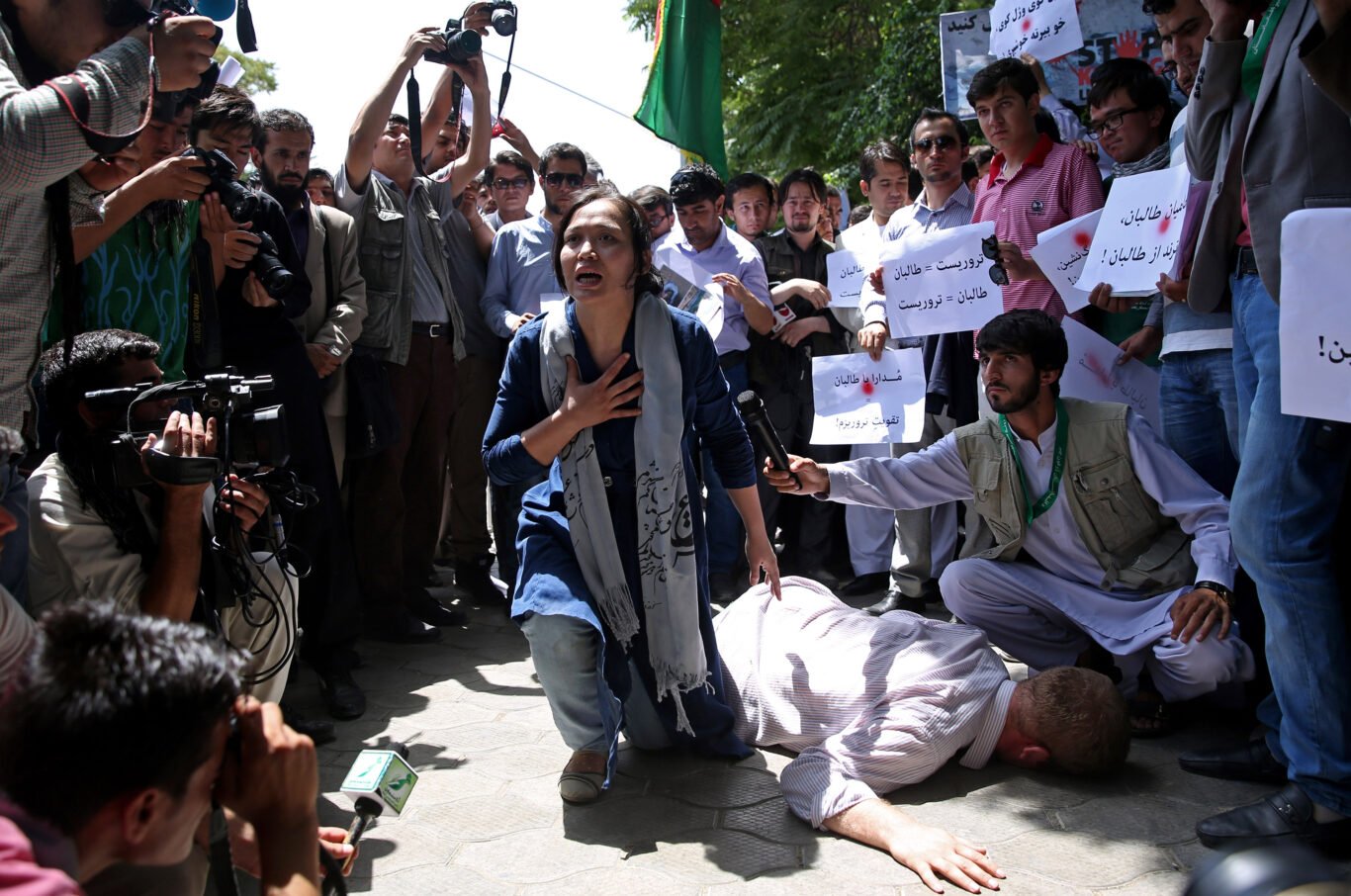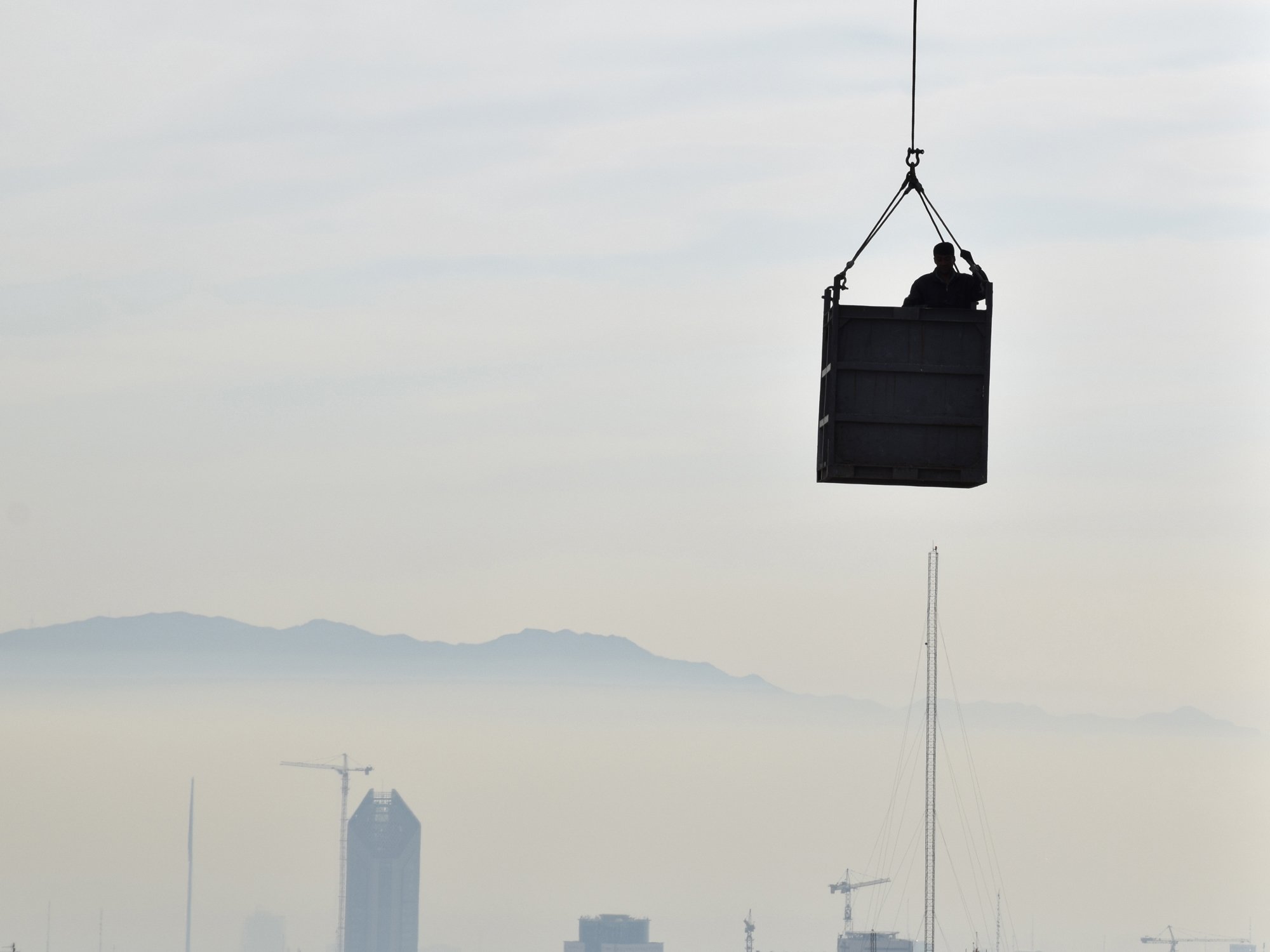
© Reza Ashrafi Amineh
Iran, Tehran, December 27, 2018.
A construction worker laboring on an unfinished residential building without essential safety harnesses and protective clothing.
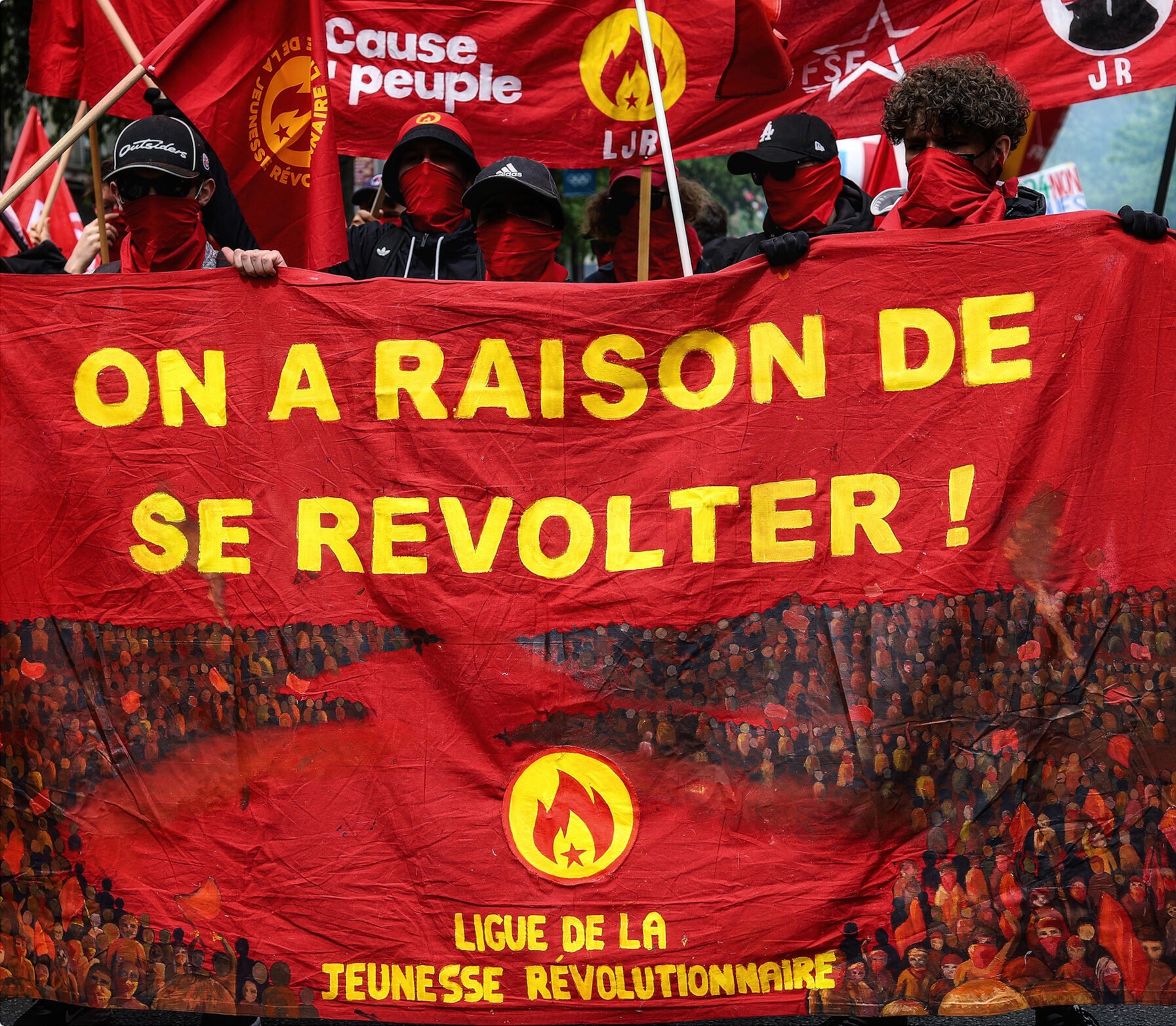
© Oli Mouazan
France, Paris, May 1, 2024.
Holding a banner reading, “We Are Right to Revolt,” a group of revolutionary youth organizations joined thousands marching on the streets of Paris for May 1.
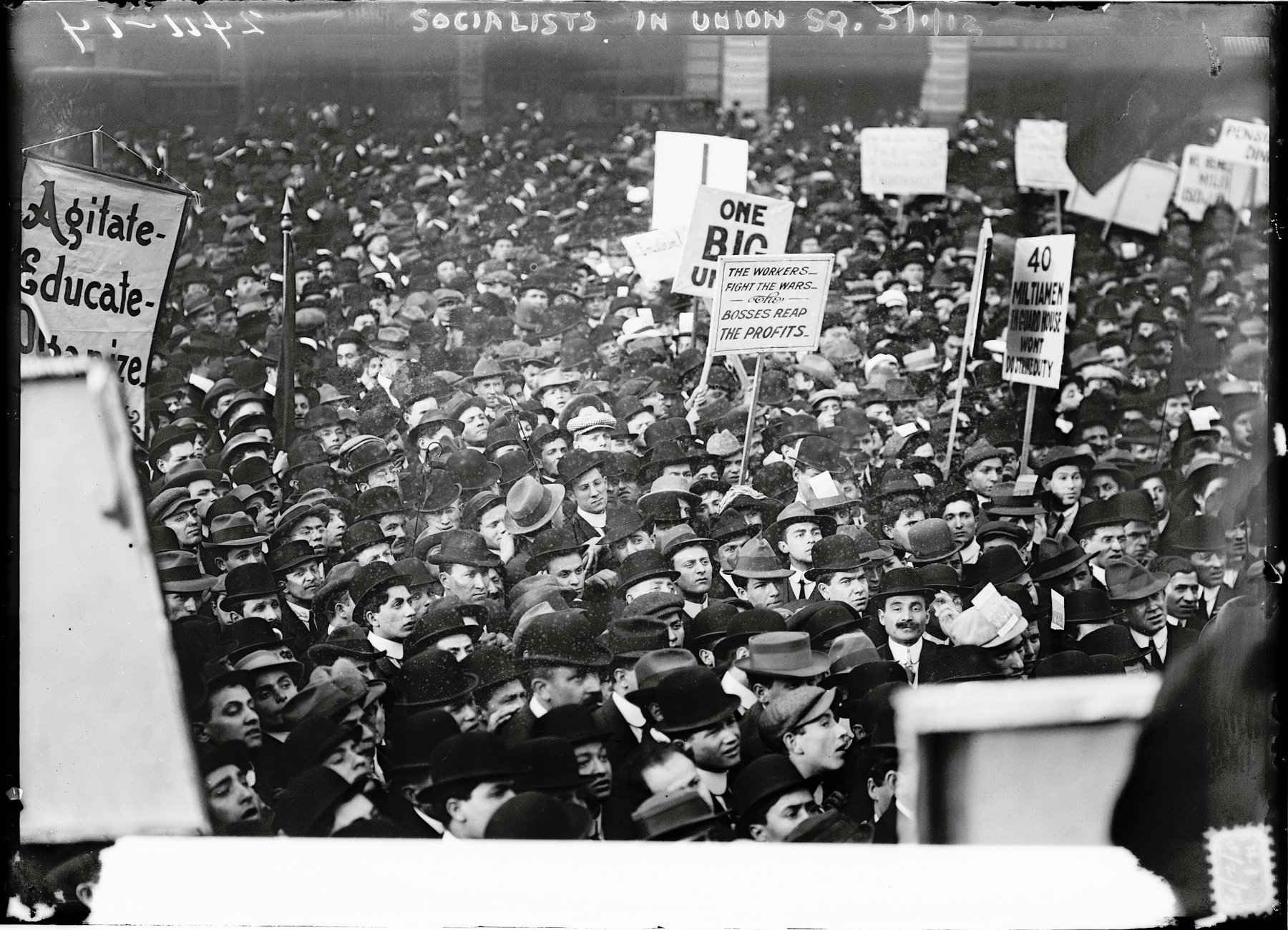
CC: Public Domain
United States, New York City, May 1, 1912.
Socialists in Union Square, New York City, on May 1, 1912.
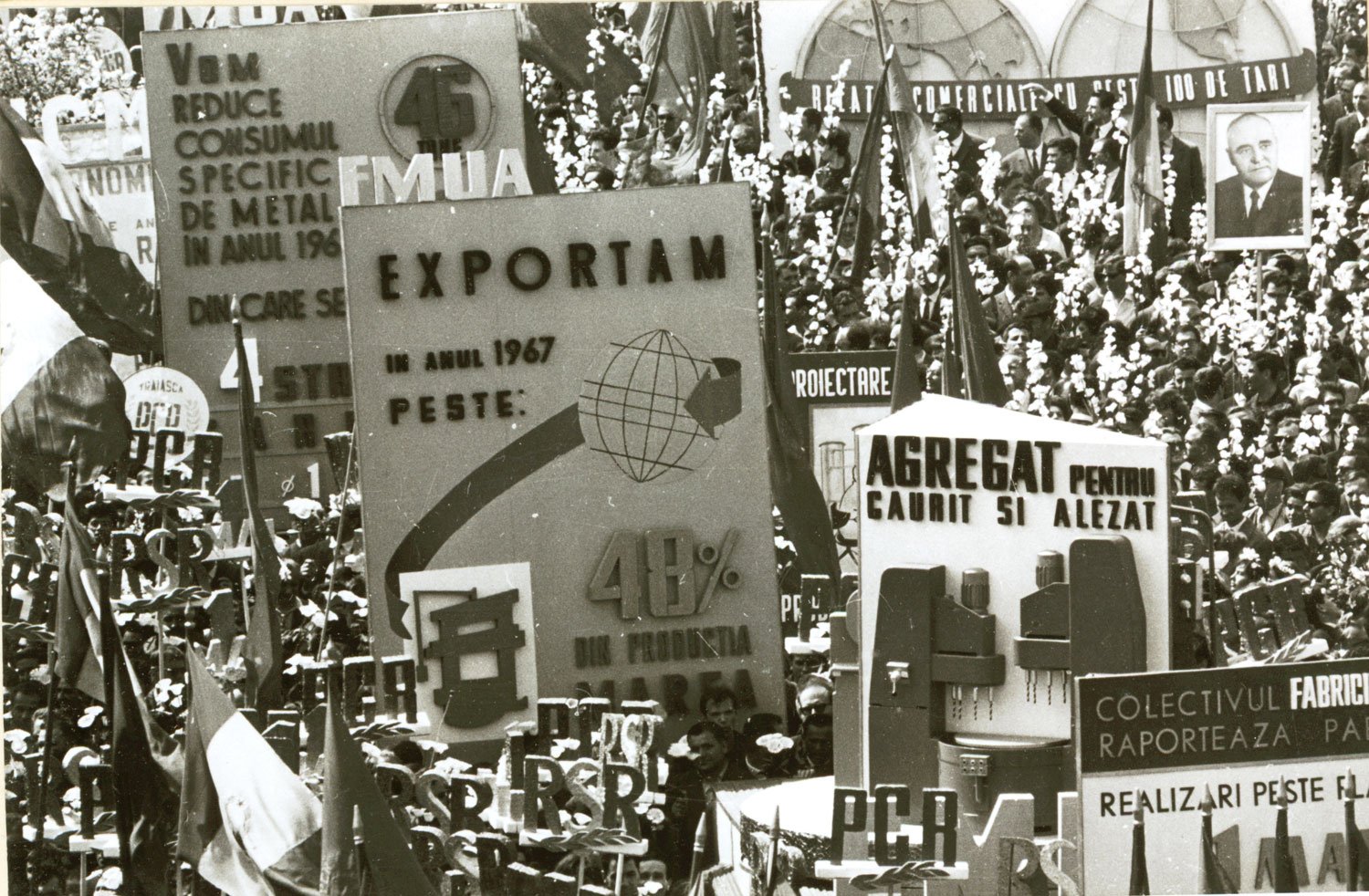
CC Public Domain
Romania, Bucharest, May 1, 1967.
May 1 rally in Bucharest, 1967.
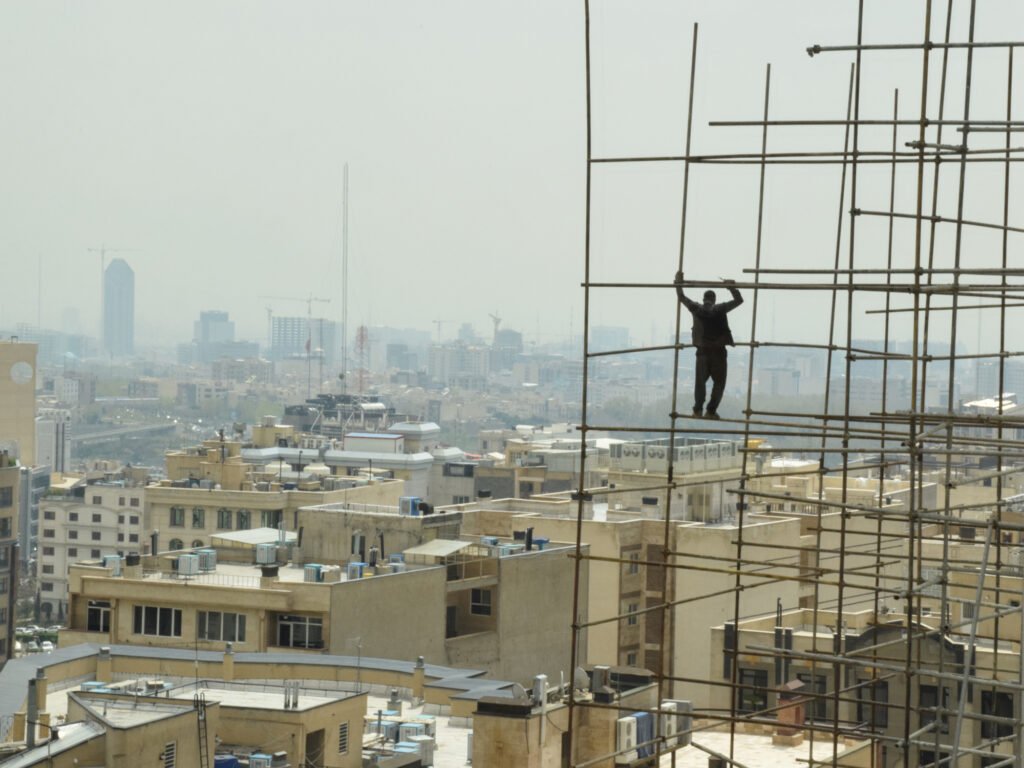
© Reza Ashrafi Amineh
Iran, Tehran, December 27, 2018.
A construction worker laboring on an unfinished residential building without essential safety harnesses and protective clothing.
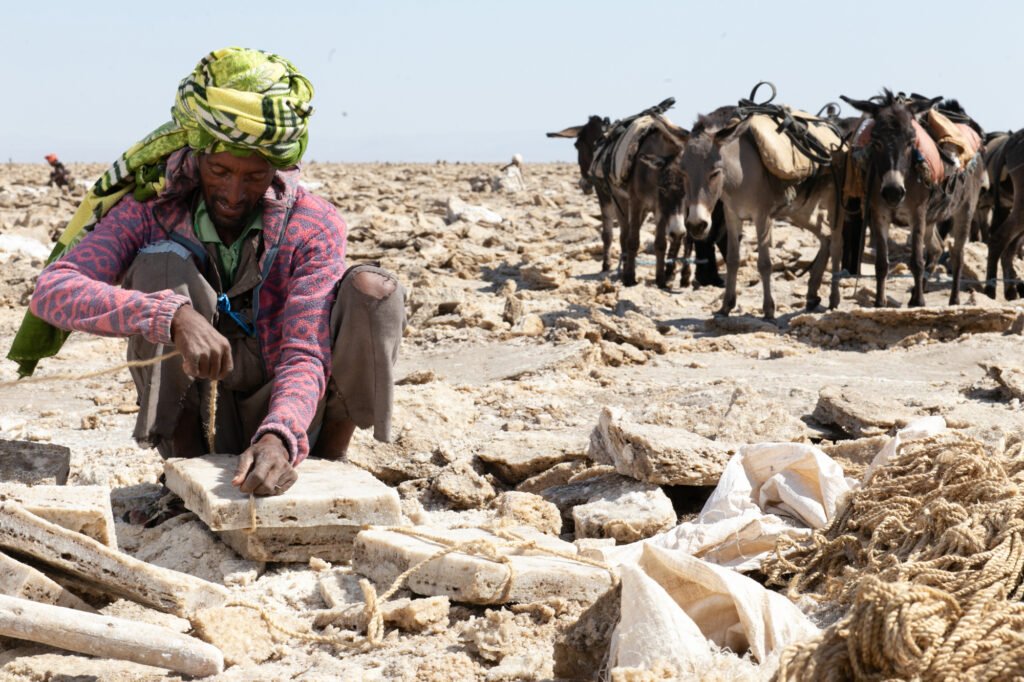
© Ezekiel Angeloni
Ethiopia, Danakil Depression, January 19, 2017.
Endurance in Extremes: Under the relentless heat of the Danakil Depression, an Ethiopian salt miner carves out blocks of salt from the vast salt flats. Each day, these laborers endure some of the earth’s harshest conditions to extract this vital mineral, which is then transported by mules and camels. This image captures not only the physical strain but also the resilience and dignity of those who labor at the edge of survivability; commemorating International Workers’ Day by highlighting the stark realities of work in extreme environments.
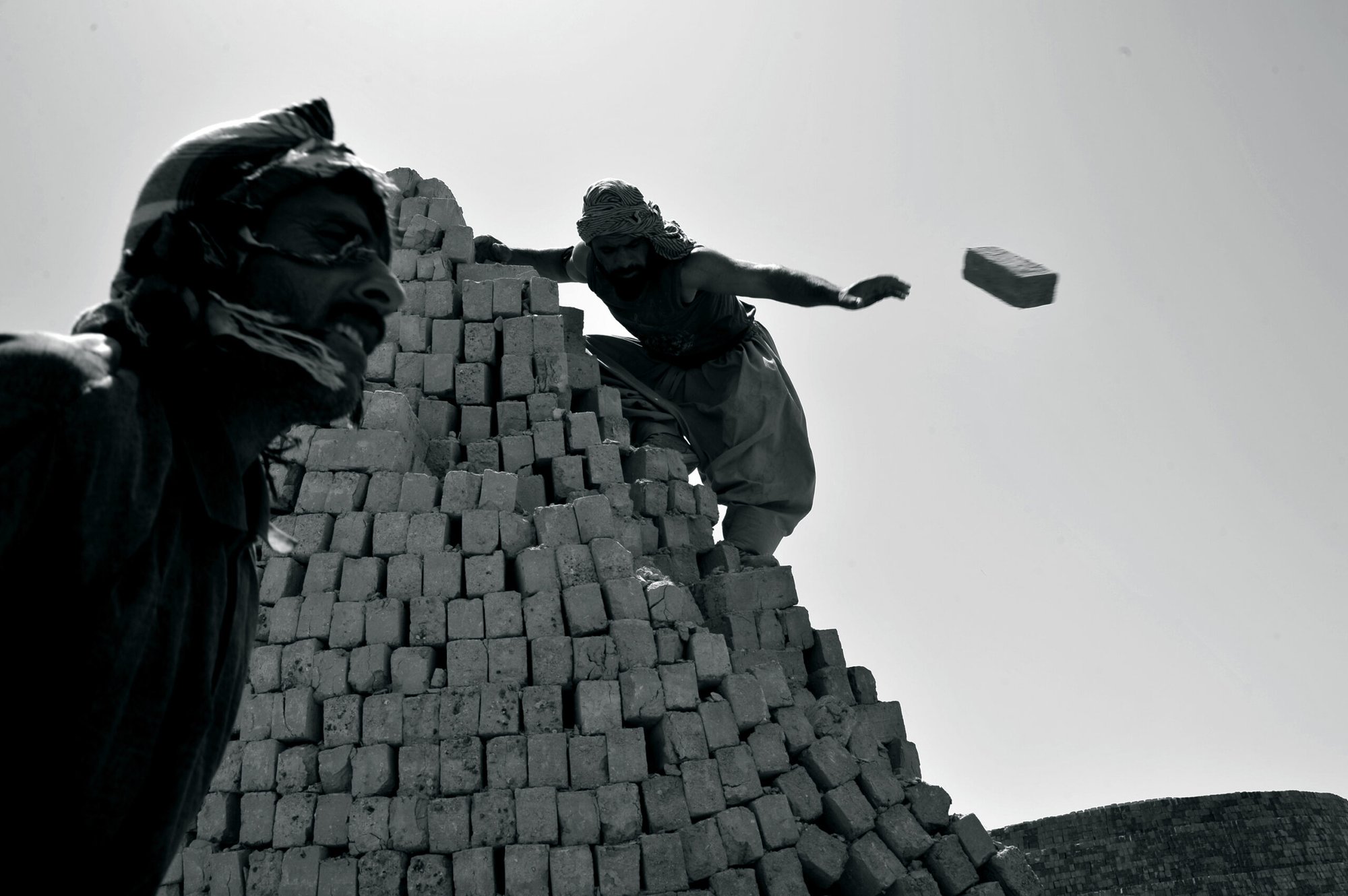
© Babak Sedighi
Iran, Qom, June 20, 2014.
Afghan workers toiling in a brick kiln workshop, mostly illegal migrants, are deprived of insurance benefits, earn minimum wages, and endure the longest working hours. Desperate to support their families back in Afghanistan, they resort to dangerous journeys to reach Iran for work. This image is part of a book that had to be exclusively published as an Ebook due to restrictions on publishing in Iran.
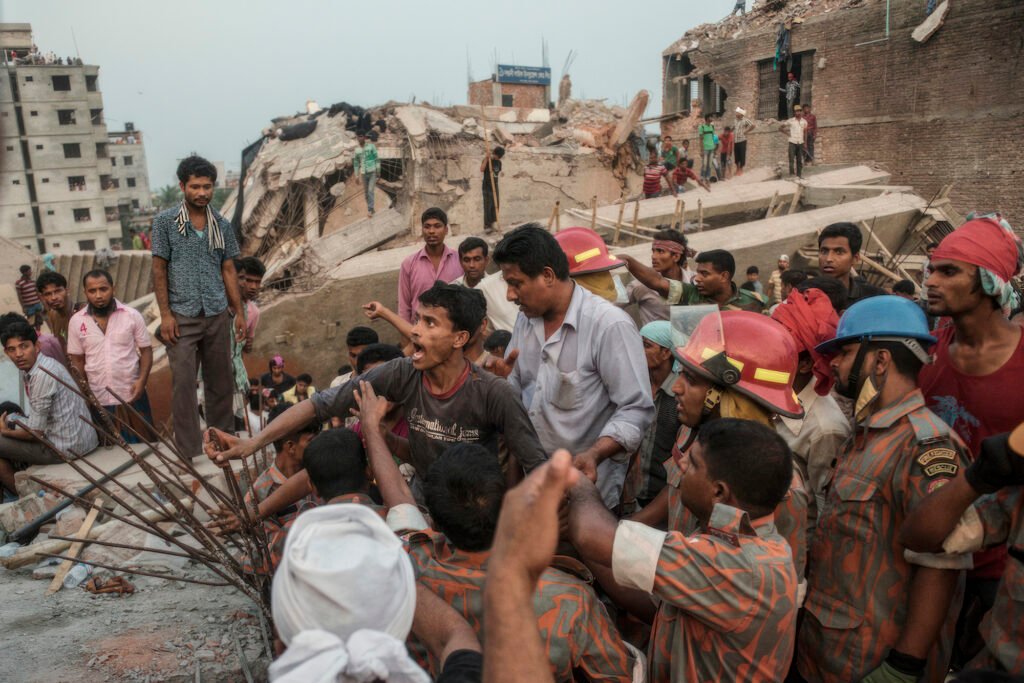
© Ismail Ferdous
Bangladesh, Dhaka, April 26, 2013.
Volunteers and rescuers at the collapsed Rana Plaza building are seen rescuing workers—both dead and alive.
The Rana Plaza, an eight-story building, collapsed around 8:45 am, killing 1,134 people and injuring over 3,000. This disaster is one of the worst tragedies in the history of the textile industry. Nearly all the victims were employees of the five garment factories housed in the building. While the textile industry has significantly boosted Bangladesh’s economy with over 4,000 garment factories, the Rana Plaza tragedy exposed the deplorable working conditions in these factories. Bangladeshi workers endure long hours for minimal wages, producing garments under hazardous conditions. These garments are then shipped to major Western retailers, generating nearly $20 billion annually for the industry.
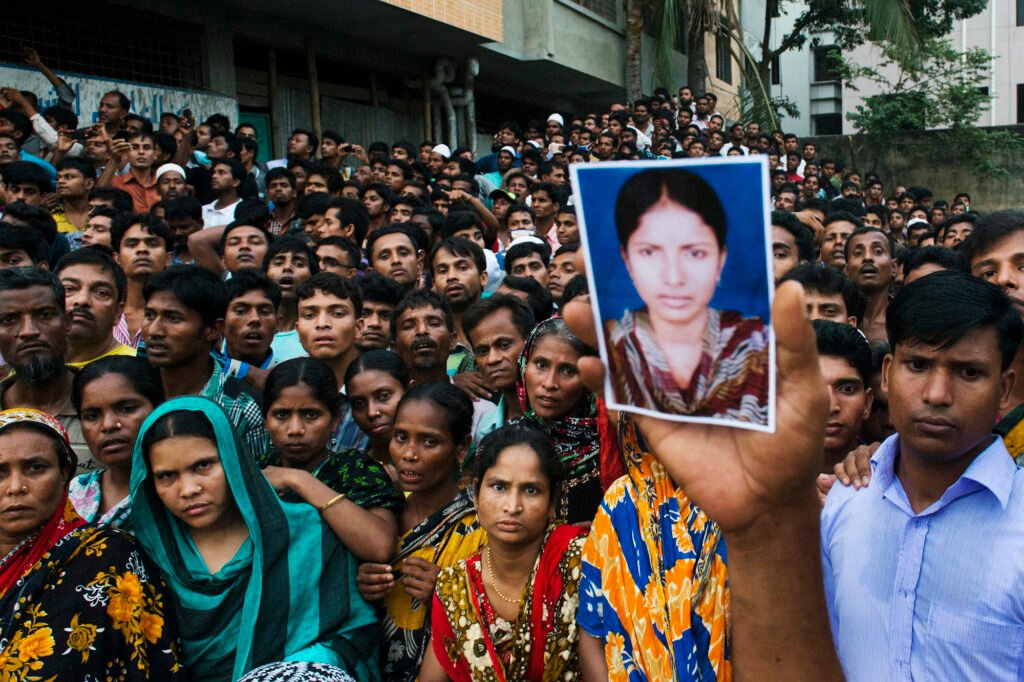
© Ismail Ferdous
Bangladesh, Dhaka, April 26, 2013.
Families of missing loved ones at the Rana Plaza collapse site.
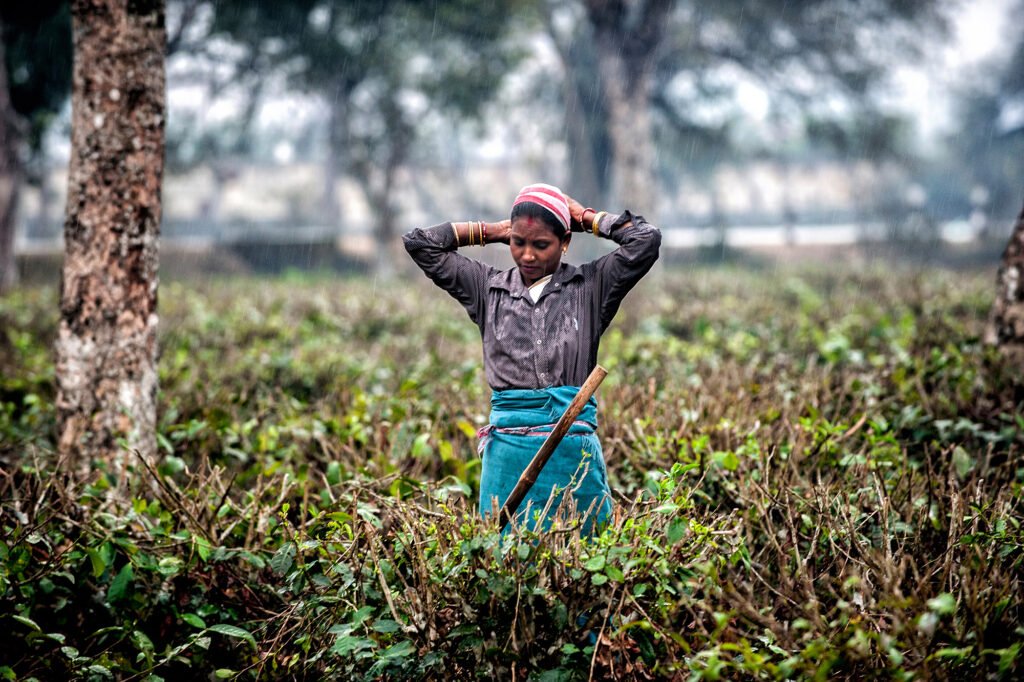
© Emiliano Pinnizzotto
India, Nagaland, February, 2017.
With no prevention or control over the territory, the consumption of opium has spread so rapidly that many men and boys have become slaves to the drug. In some areas a third of men are addicted slaves to opium: they do no work, and squander their family’s patrimony on the substance. While the women go into the fields to work, labouring all day in whatever climatic conditions, the men gather in a hut to smoke opium and lose themselves in the ‘apathetic high’ that this drug produces.
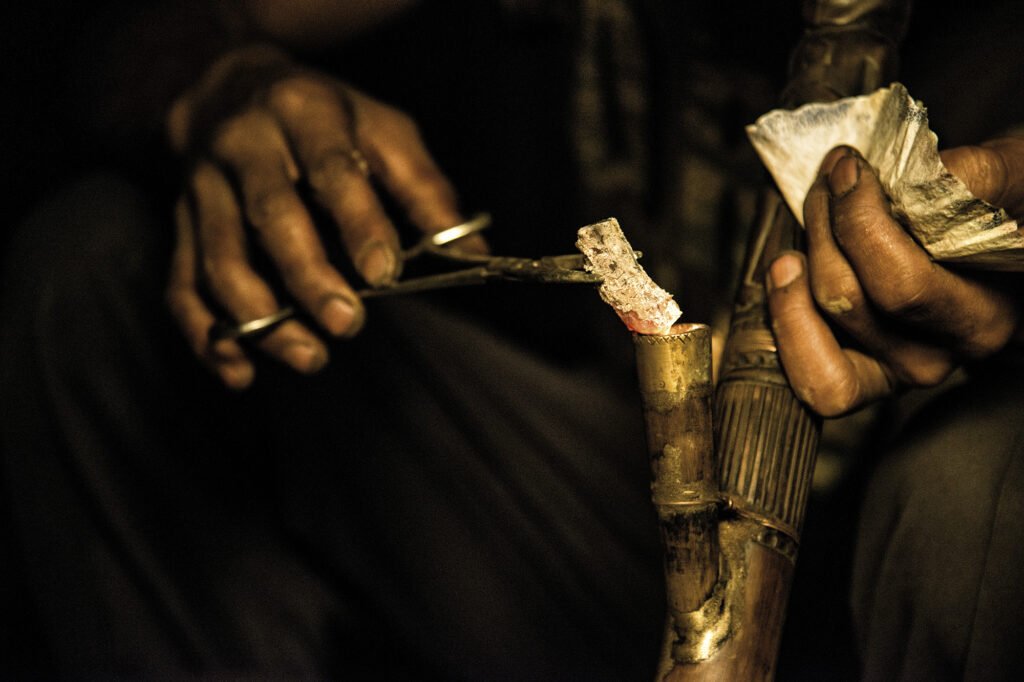
© Emiliano Pinnizzotto
India, Nagaland, February 2017.
With no prevention or control over the territory, the consumption of opium has spread so rapidly that many men and boys have become slaves to the drug. In some areas a third of men are addicted slaves to opium: they do no work, and squander their family’s patrimony on the substance. While the women go into the fields to work, labouring all day in whatever climatic conditions, the men gather in a hut to smoke opium and lose themselves in the ‘apathetic high’ that this drug produces.

© Chris Lau
Canada, Montreal, March 29, 2023.
Adore is a sex worker involved with The Sex Work Autonomous Committee (SWAC ), an autonomous political organization initiated by sex workers in Montreal. They advocate for the decriminalization of all forms of sex work, recognizing that sex work is work and the need to decriminalize it to obtain the same labor rights as other workers. In Canada, as in many other countries, laws continue to exacerbate the stigma, discrimination, violence, and lack of access to basic rights such as protection and health care. Because of such laws, sex workers cannot benefit from their rights to freedom of expression or association, security, right to work, and right to enjoy just working conditions.
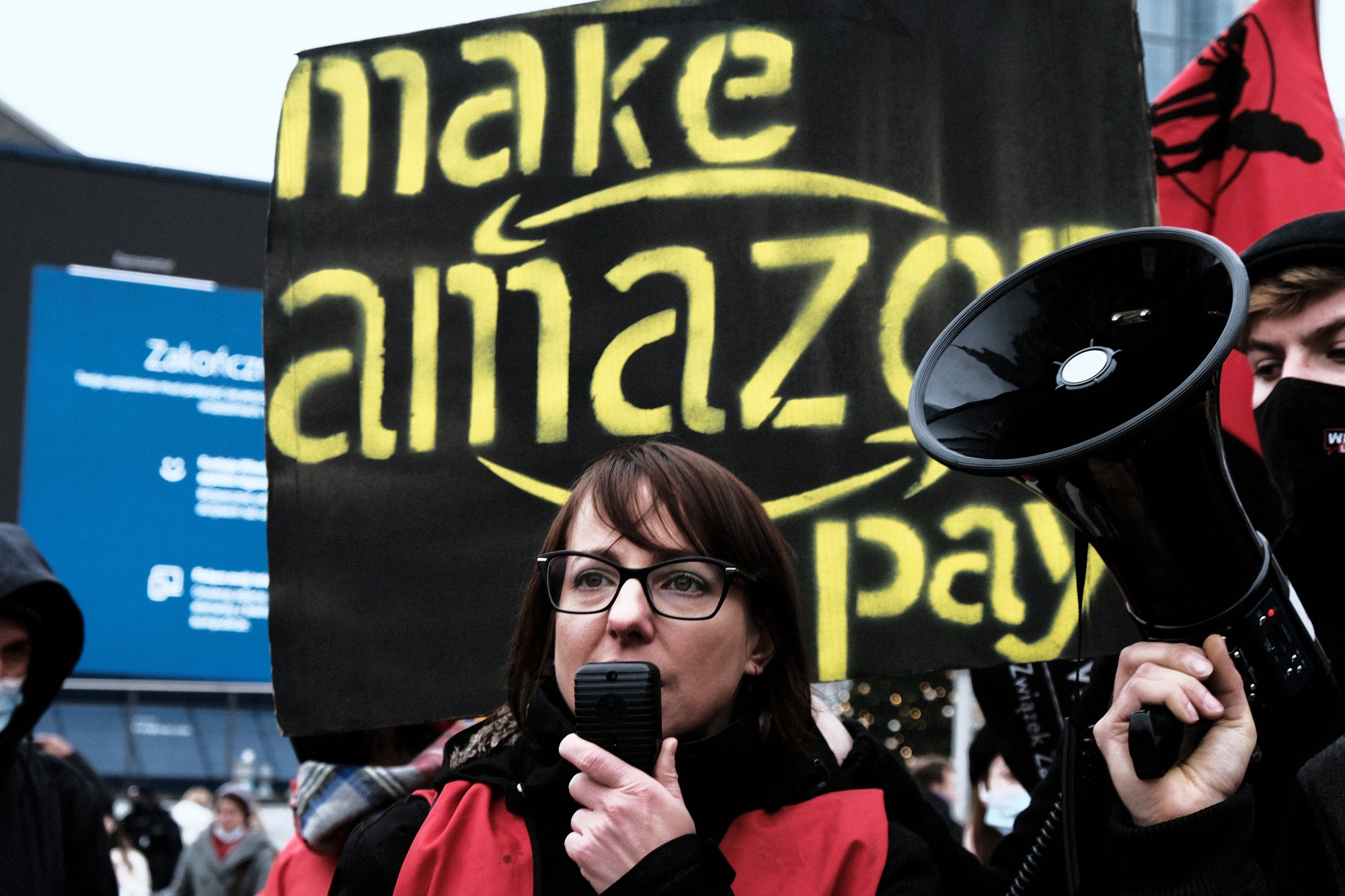
© Tomek Swierzewski
Poland, Warsaw, November 26, 2021.
Magda Malinowska (pictured) at the Black Friday demonstration organized by her trade union Inicjatywa Pracownicza (Worker’s Initiative) under the banner “Make Amazon Pay!” Demanding justice, they called for Amazon to pay for the deaths of colleagues, union busting, wrongful dismissals, worker exploitation, environmental destruction, and tax evasion. Despite being a union member and a Social Labor Inspector, Amazon terminated her in November 2021 for alleged disciplinary reasons, including filming an employee’s body. Despite legal protections and her role, Amazon refused to include her in post-accident investigations, leading to her dismissal. After a legal battle, she was reinstated in October 2023, but Amazon appealed. On April 5, 2024, the District Court in Poznan upheld her reinstatement, rejecting Amazon’s appeal.
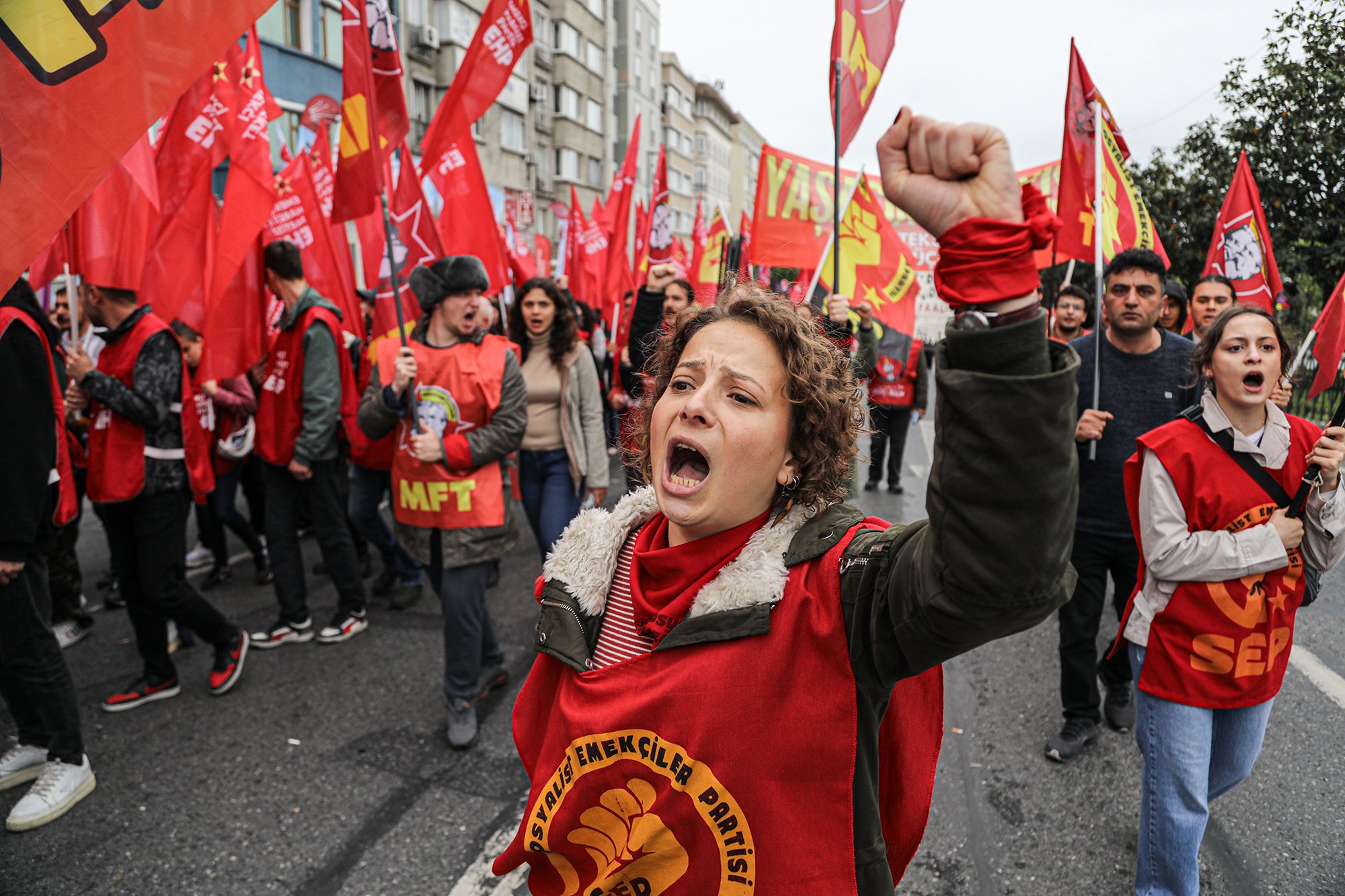
© Murat Bay
Turkey, Istanbul, May 1, 2024.
Thousands responded to the call of labor organizations’ to gather in Istanbul Saraçhane on May 1, Labor Day. Police used water cannons, pepper gas, and rubber bullets against those marching to Taksim, resulting in 1.5 hours of clashes. The “Bloody May 1st” massacre in 1977, where 34 died and 136 were injured, solidified Taksim Square as a symbol for Turkey’s working class. Despite government bans, Taksim sees annual clashes between workers, left-wing groups, and police, with roads and public transportation to the square blocked. Dozens of activists were detained during this May 1 demonstration, with some still in custody.
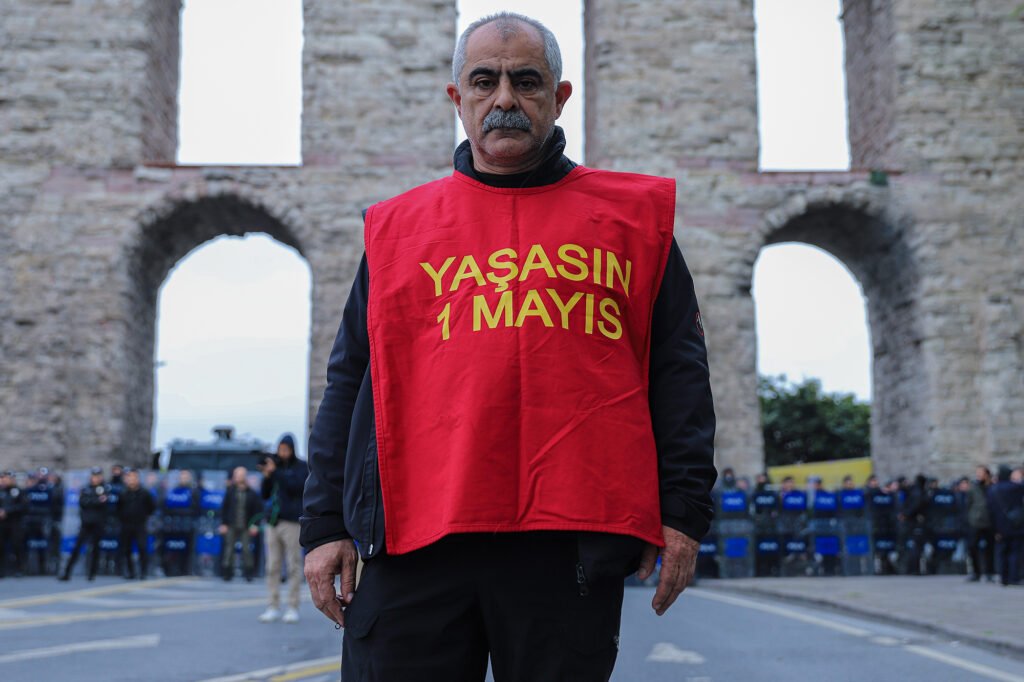
© Metin Mercan
Turkey, Istanbul, May 1, 2024.
A worker, wearing an apron “Long live May 1” written on it, stands in front of a police barricade, determined to march to Taksim Square to celebrate May 1st. Taksim Square is a symbolic location for the May 1st celebrations in Turkey. In 1977, 34 people lost their lives during the celebrations, and a subsequent coup led to a ban on gatherings in the square. Celebrations were briefly allowed in 2010 but were banned again in 2013 due to construction. Despite the construction being completed, May 1st celebrations have been forbidden in the square for years. On this day, all roads in the region are closed and public transportation services are cancelled.
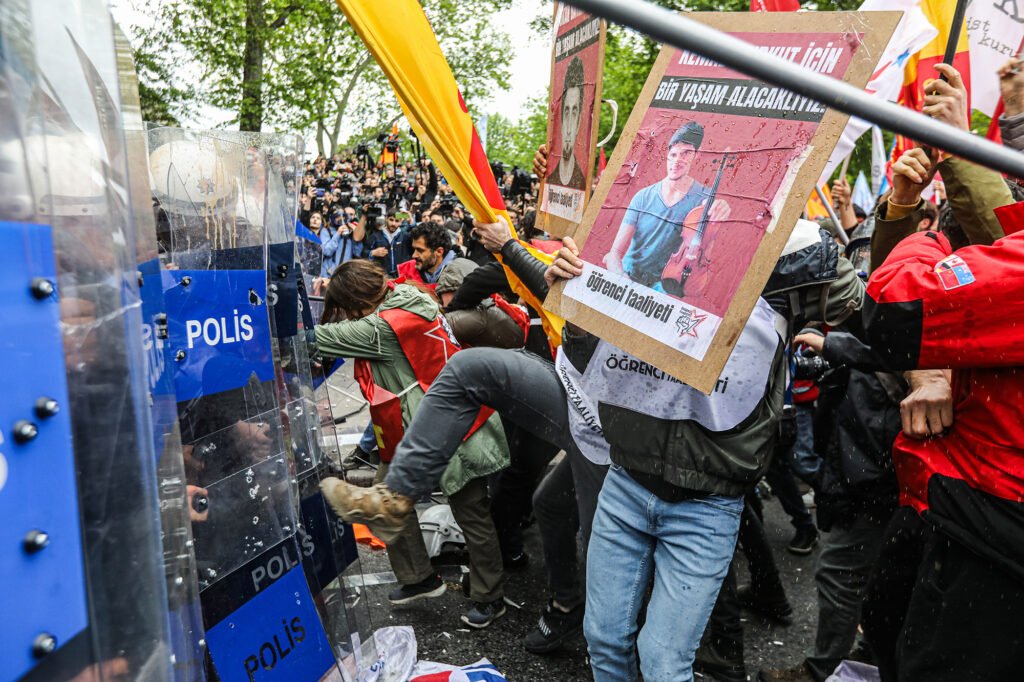
© Murat Bay
Turkey, Istanbul, May 1, 2024.
During the May 1 demonstration in Istanbul, a youth organization called “Student Activity” advances towards the police barricade, holding a photo of Kemal Kurkut, a 23-year-old university student killed by police during the Diyarbakır Newroz celebrations on March 21, 2017.
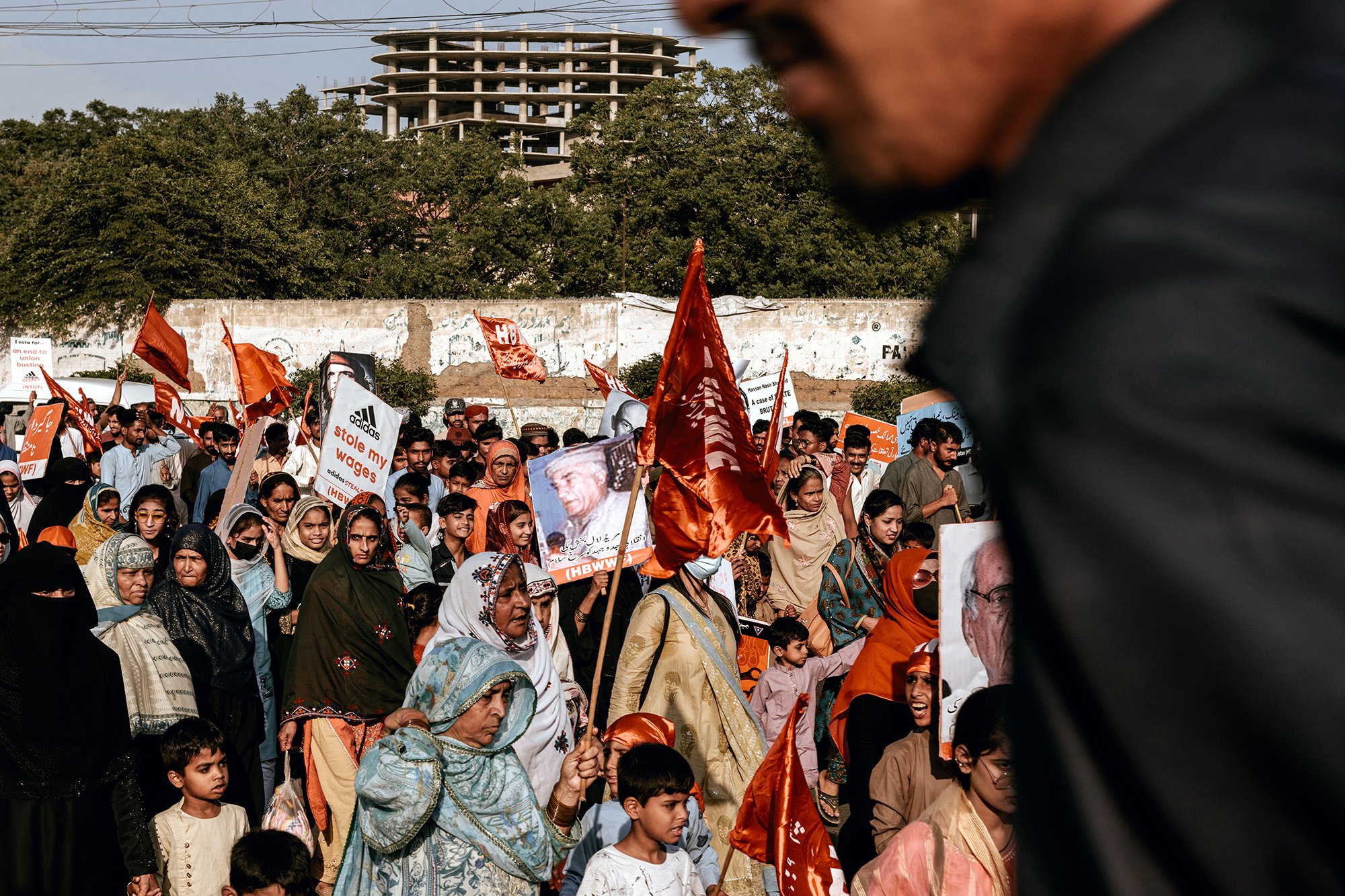
© Karine Pierre
Pakistan, Karachi, May 1, 2023.
On the occasion of Labor Day, some 1,500 people marched through the city. For women, it’s an opportunity to make their voices heard and claim their rights. However, most women workers in Pakistan work in the informal economy and are therefore unrepresented by trade union organizations.
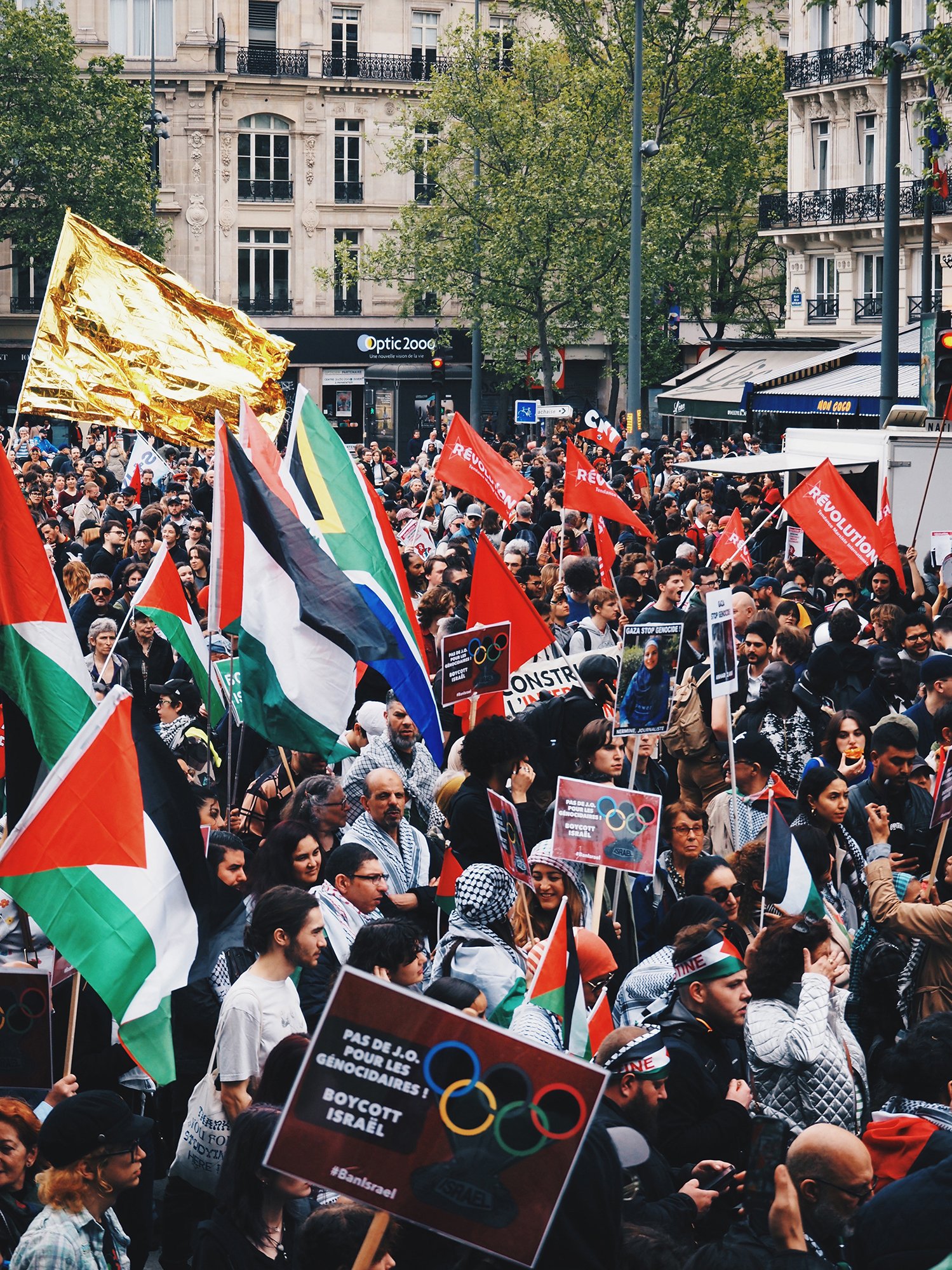
© Ema Sakri Guislard
France, Paris, May 1, 2024.
A Parisian May 1st in the colors of Palestine. Students and workers demonstrate their support for the Palestinians with symbolic flags and decolonial slogans: “for the end of the Palestinian genocide.” In foresight of the 2024 Olympic Games this summer in Paris, demonstrators denounce the exploitation of workers on construction sites and condemn the participation of the State of Israel in the event.
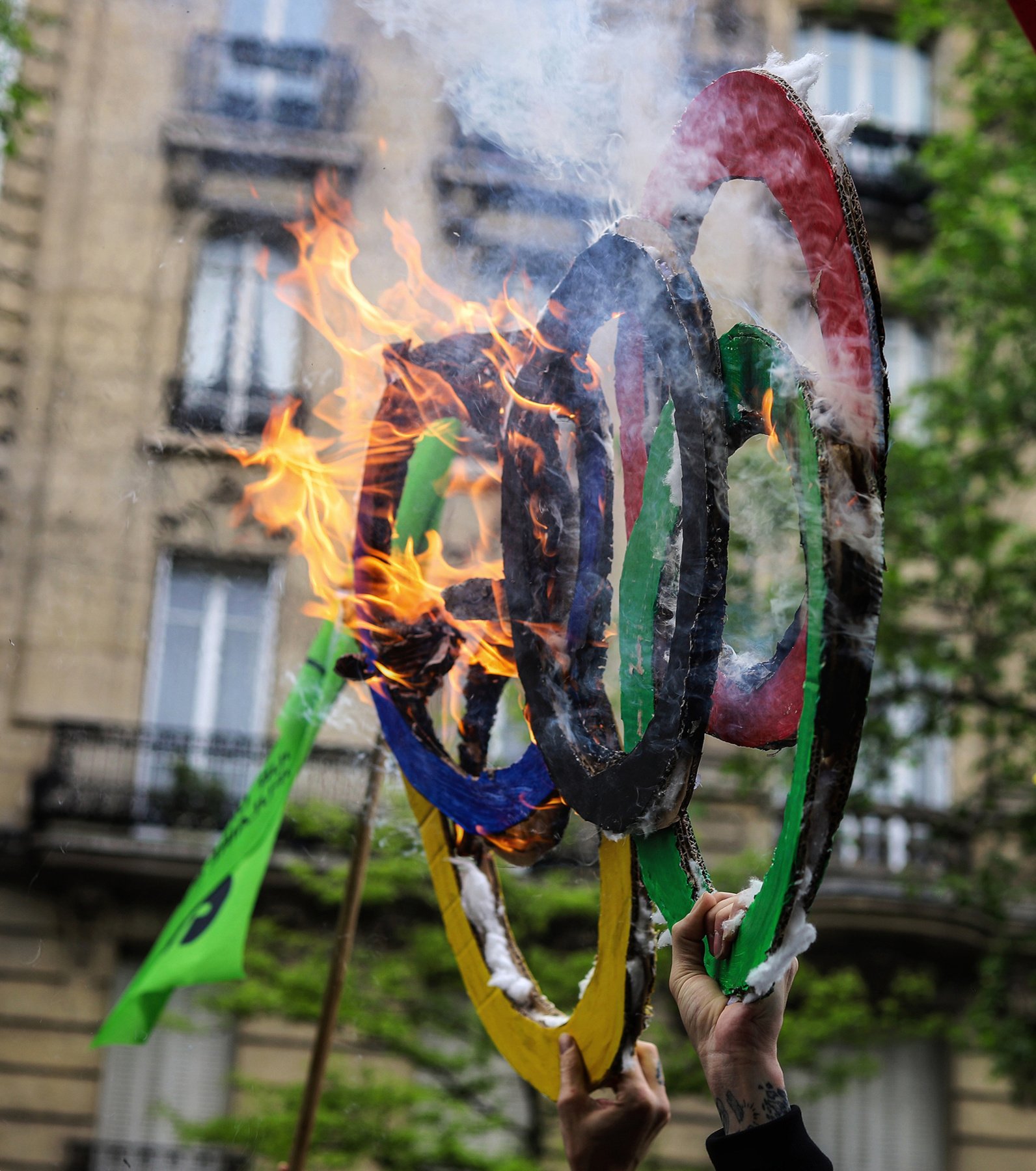
© Oli Mouazan
France, Paris, May 1, 2024.
With a few months left until the Olympic Games, a protester burned the Olympic symbol during a May Day march on the streets of Paris, expressing anger over issues such as the event’s cost, displacement of residents, and commercialization.

© Camille Bessard
France, Paris, May 1, 2019.
The May 1st, 2019 demonstrations in Paris saw significant police violence amidst the backdrop of the Gilets Jaunes (Yellow Vests) movement, which emerged in late 2018 in response to a series of tax hikes, particularly on fuel. It was a spontaneous mobilization of ordinary citizens, wearing yellow waistcoats as a symbol of visibility and protest. The movement quickly evolved to address broader demands relating to social inequality, the cost of living, and political representation.
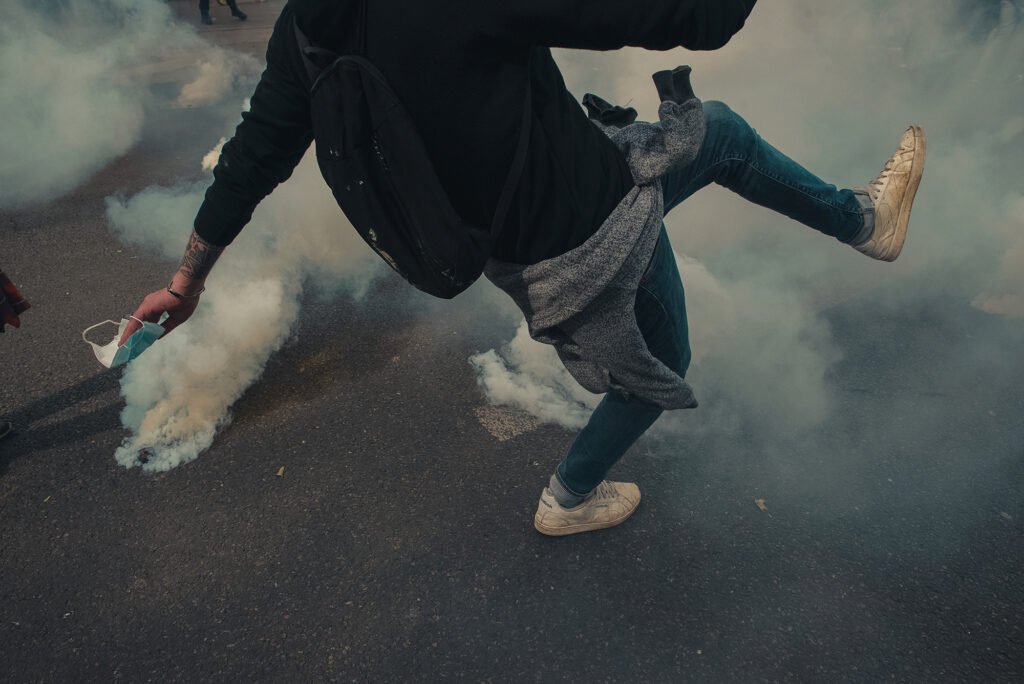
© Davood Maeili
France, Paris, May 1, 2024.
The presence of people in Paris on May 1st! Beyond professional demands, dancing, and various group performances, participation in any demonstration in France becomes an opportunity to express current concerns, including the widespread massacre in Gaza.
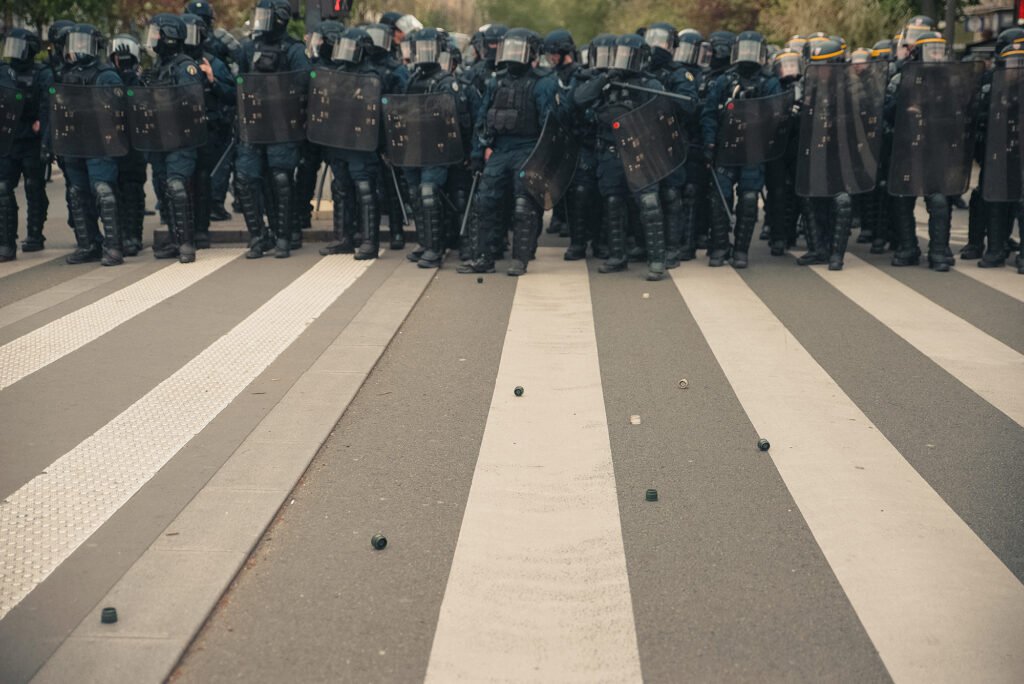
© Davood Maeili
France, Paris, May 1, 2024.
The presence of people in Paris on May 1st! Beyond professional demands, dancing, and various group performances, participation in any demonstration in France becomes an opportunity to express current concerns, including the widespread massacre in Gaza.
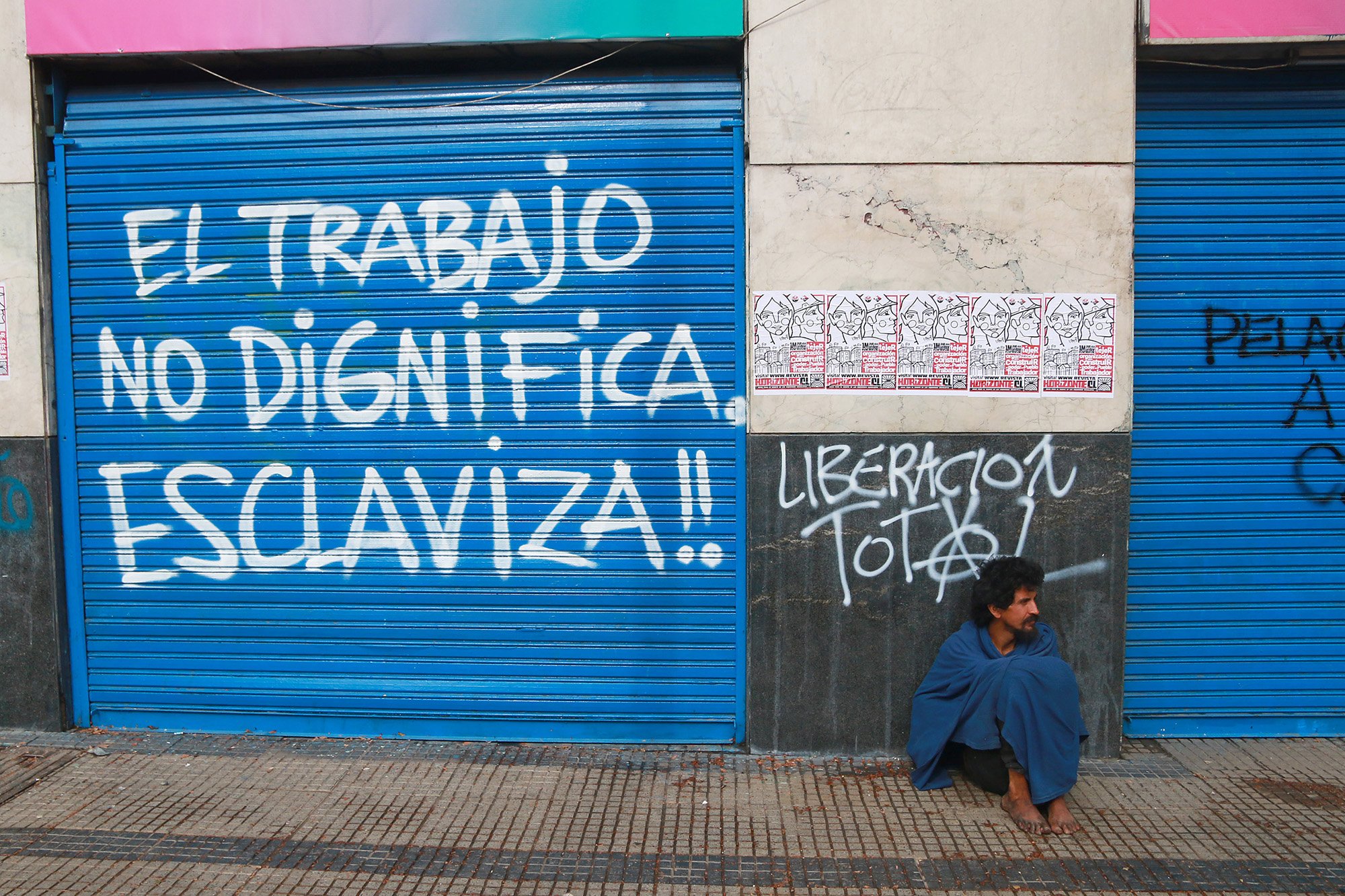
© Sebastian Silva
Chile, Santiago, May 1, 2024.
A homeless man sits by a wall with the slogan “Work does not dignify, it enslaves” written on it during a demonstration on International Workers’ Day.
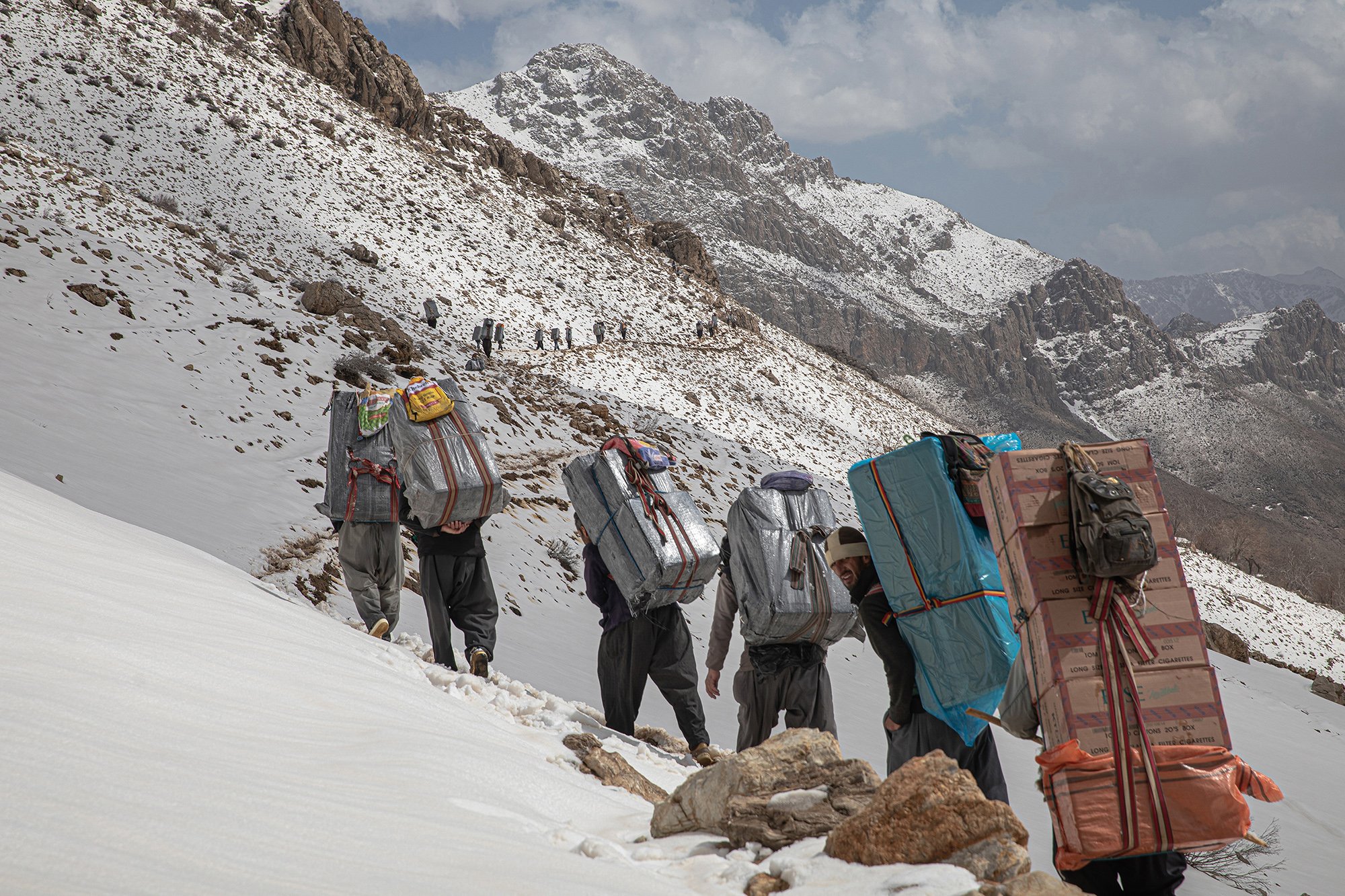
© Ebrahim Alipoor
Iran-Iraq border, Zagros mountains, March 8, 2022.
Koolbars crossing the Zagros mountains on the border of Iran and Iraq.
In Kurdish regions of Western Iran, the Kurdish term Koolbary (being a porter) was coined to describe the act of transporting goods across the border on one’s shoulders in exchange for a small amount of money. Surviving wounded Koolbars, their families, as well as families of dead Koolbars, face numerous challenges and hardships. As Koolbaring is not recognized as a “profession” in Iran—even being considered illegal—affected Koolbars and their families are not supported in any way.
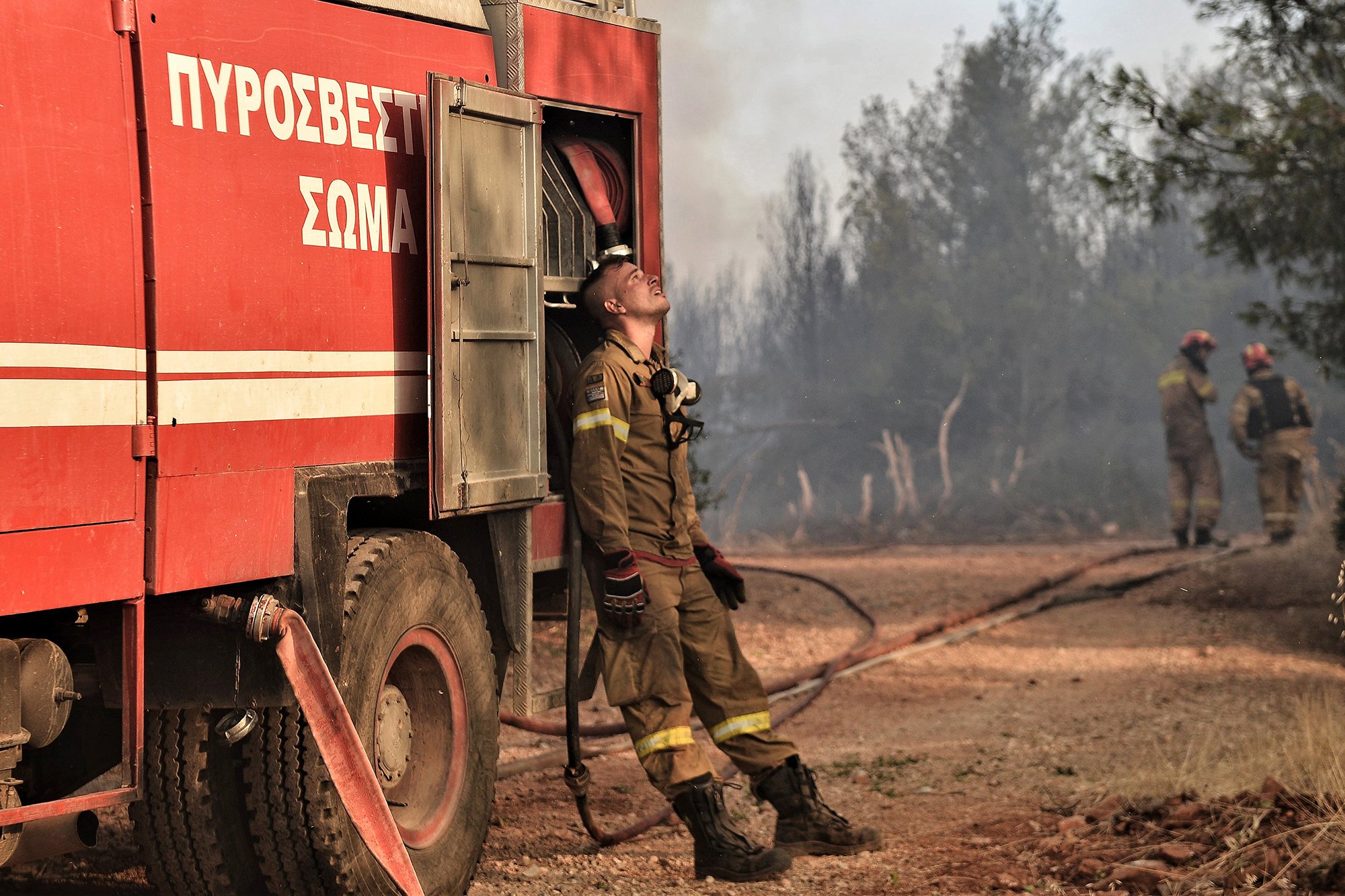
© William Faithful
Greece, Athens, July 20, 2023.
A firefighter takes a break during a wildfire on the western outskirts of Athens. This firefighter is a “seasonal firefighter,” a term used in Greece to describe those whose contracts span the wildfire season, typically from May 1 to October 31. These firefighters work for about six months each year, remaining unemployed or finding other jobs for the rest of the year. Seasonal firefighters make up approximately 20% of Greece’s firefighting force.
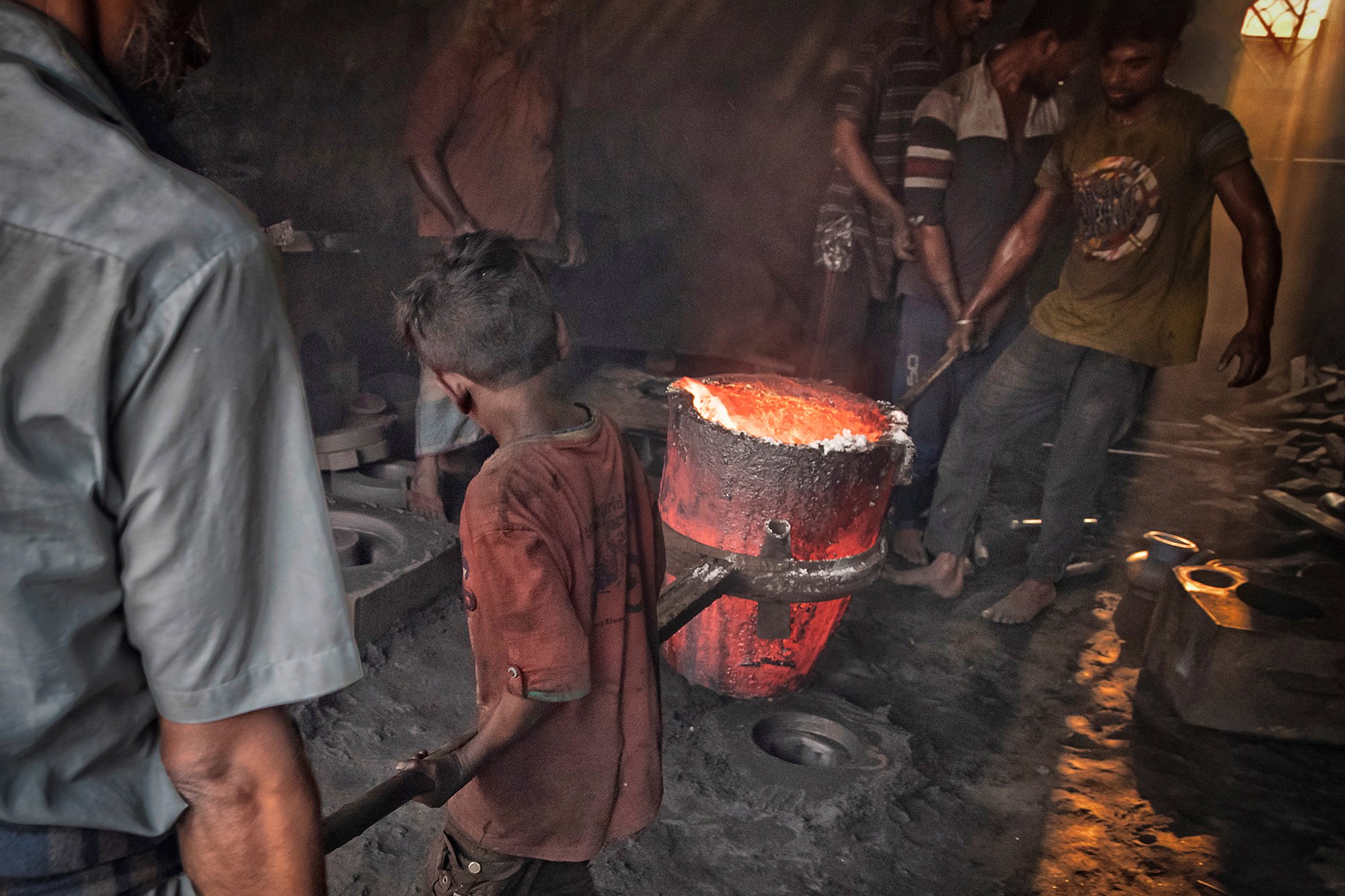
© Steve Reynolds
Bangladesh, Dhaka, May 15, 2018.
Child Labor in Bangladesh is common, with 4.8 million or 12.6% of children aged 5-14 in the work force. Moreover, manual labor working conditions in a number of industries across Bangladesh have extraordinarily little safety procedures in place. And not just in the garment industries, but in other workplaces too: quarry work and in the back streets of shipyards. The latter is associated with heavy industry, which on the back streets of Dhaka often comes with poor, dark, and grimy working conditions. It is also dangerous with thick, black smoke, fire, and intense heat as constant companions. Here both the young and the old work together.
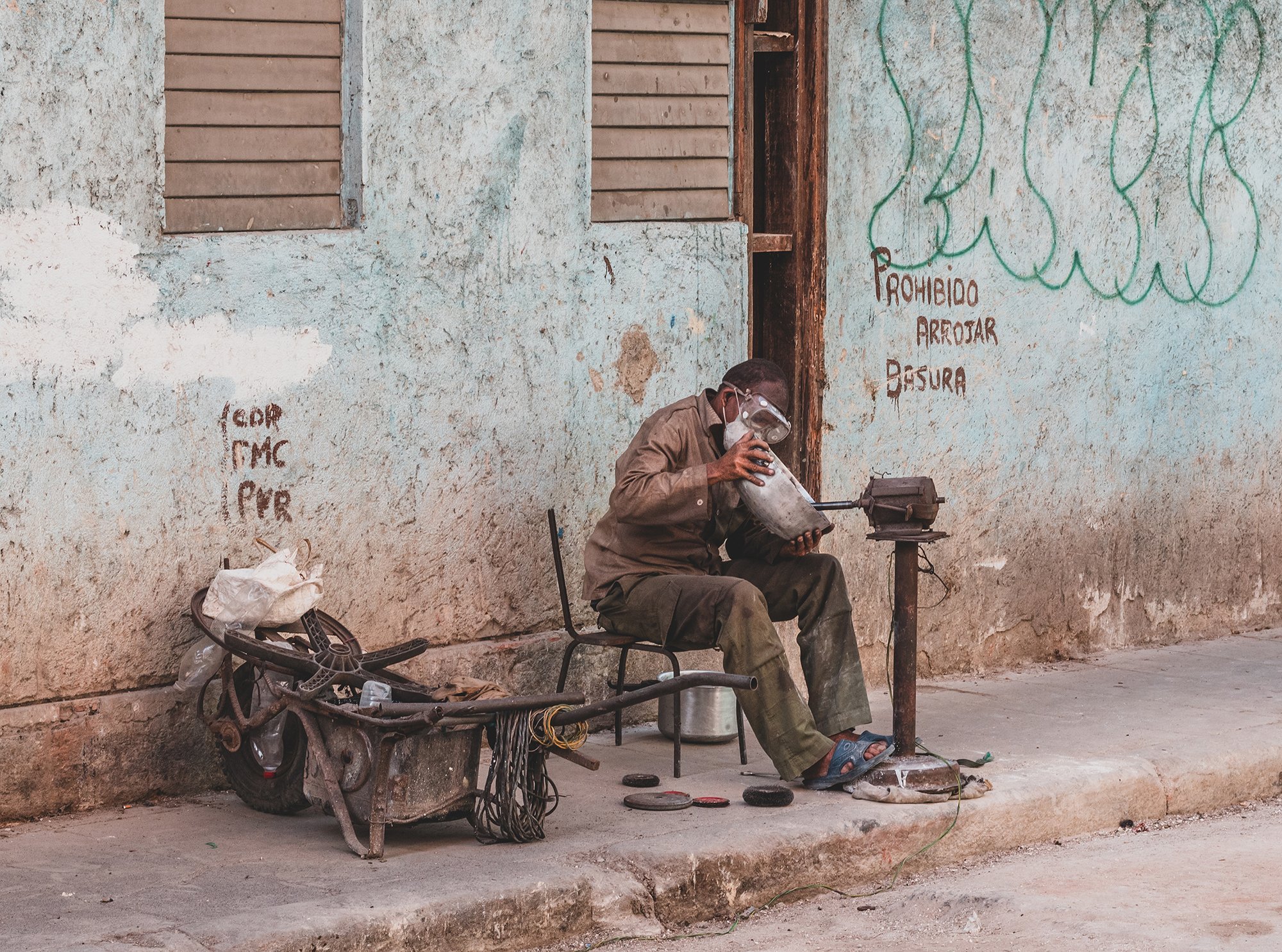
© Ali Khadr
Cuba, Havana, March 2022.
Worker on the streets of Havana, persevering amidst economic turmoil, sanctions, and the lasting impacts of the COVID-19 pandemic.
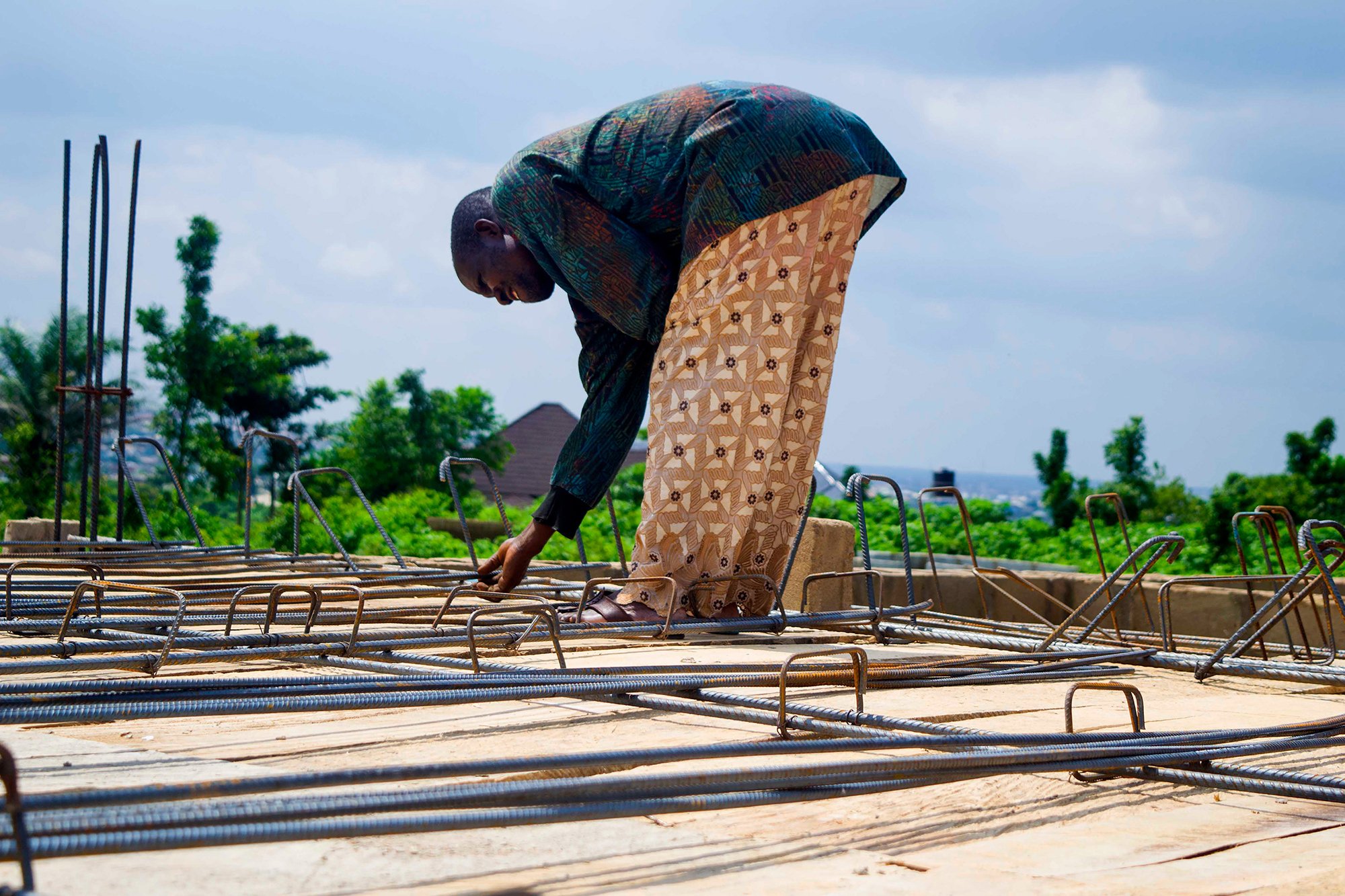
© Bukunmi Oyewole
Nigeria, Ibadan, July 11, 2017.
A welder on a decking site. As a self-employed worker, he lacks insurance or government support, facing heavy taxation. Despite these challenges, he continues to work hard and skillfully, showcasing his dedication and craftsmanship.
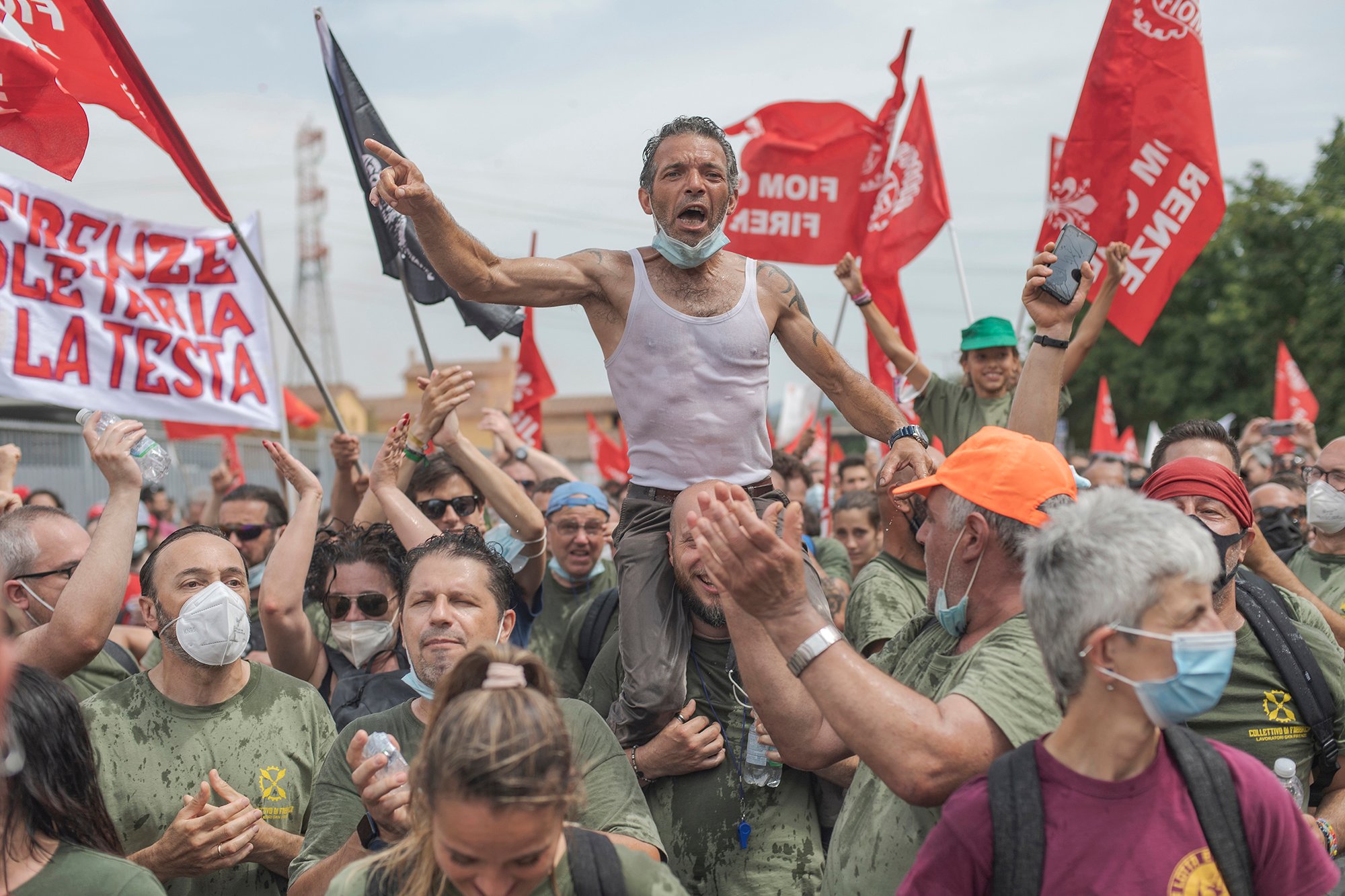
© Michele Lapini
Italy, Florence, July 24, 2021.
Thousands march around the Gkn plant in Campi Bisenzio alongside the 442 workers dismissed by the company with a simple email. The factory was occupied with a permanent garrison under the slogan “Let’s rise up”, with several strikes and initiatives at both local and national levels. This collective dismissal was advised by the Draghi government, and will most likely produce a social earthquake.
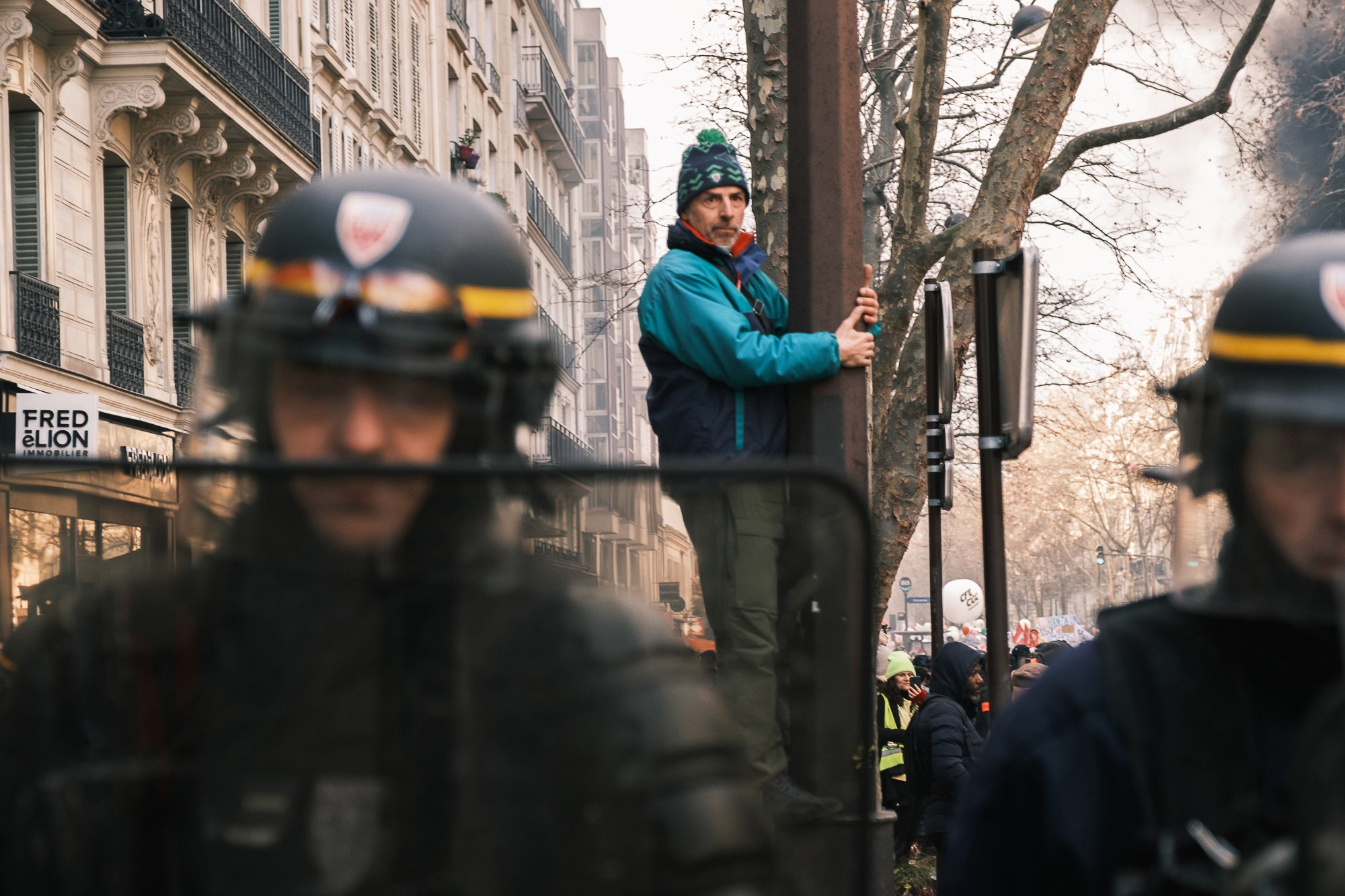
© Bastien André
France, Paris, February 11, 2023.
Fourth act of the strikes against pension reform. A demonstrator clinging to a tree behind the forces of law and order. More than 400,000 people were present in Paris to protest against a reform toughening working conditions.



